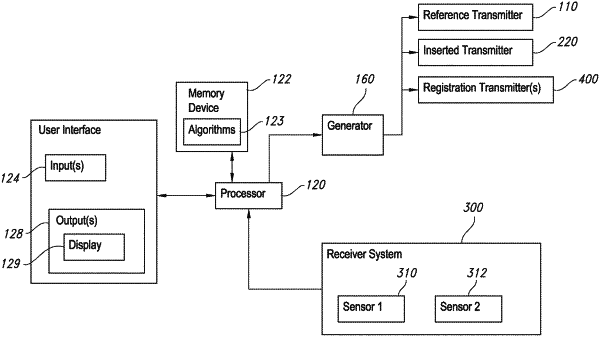| CPC A61M 25/0127 (2013.01) [A61B 34/25 (2016.02); A61M 25/0102 (2013.01); A61M 25/0108 (2013.01); A61B 2034/105 (2016.02); A61B 2034/2051 (2016.02); A61B 2034/2063 (2016.02); A61B 2034/2072 (2016.02); A61M 2025/0166 (2013.01)] | 28 Claims |

|
1. A medical device position guidance system comprising:
at least one reference transmitter, wherein the at least one reference transmitter is configured to maintain a fixed position relative to a subject;
at least one registration transmitter, wherein the at least one registration transmitter is configured to be registered and placed on an anatomical landmark of the subject such that the anatomical coordinate systems forms a representation of the subject's external anatomy, wherein a receiver system is configured to receive signals from the at least one registration transmitter;
the receiver system configured to receive signals from the at least one reference transmitter;
a processor, wherein the at least one reference transmitter and the receiver system are operatively coupled to the processor; and
a memory device storing instructions which when executed by the processor, cause the processor to:
(i) receive signals relating to the location and orientation of the receiver system relative to the at least one reference transmitter:
(ii) receive signals relating to the location and orientation of the at least one registration transmitter relative to the receiver system: and
(iii) using the received signals, create an anatomical coordinate system,
wherein the memory device further includes information defining a pre-defined anthropometric relationship between the anatomical coordinate system of the subject's external anatomy and the internal anatomical shape and size of the subject.
|